Top Ten University Press Picks
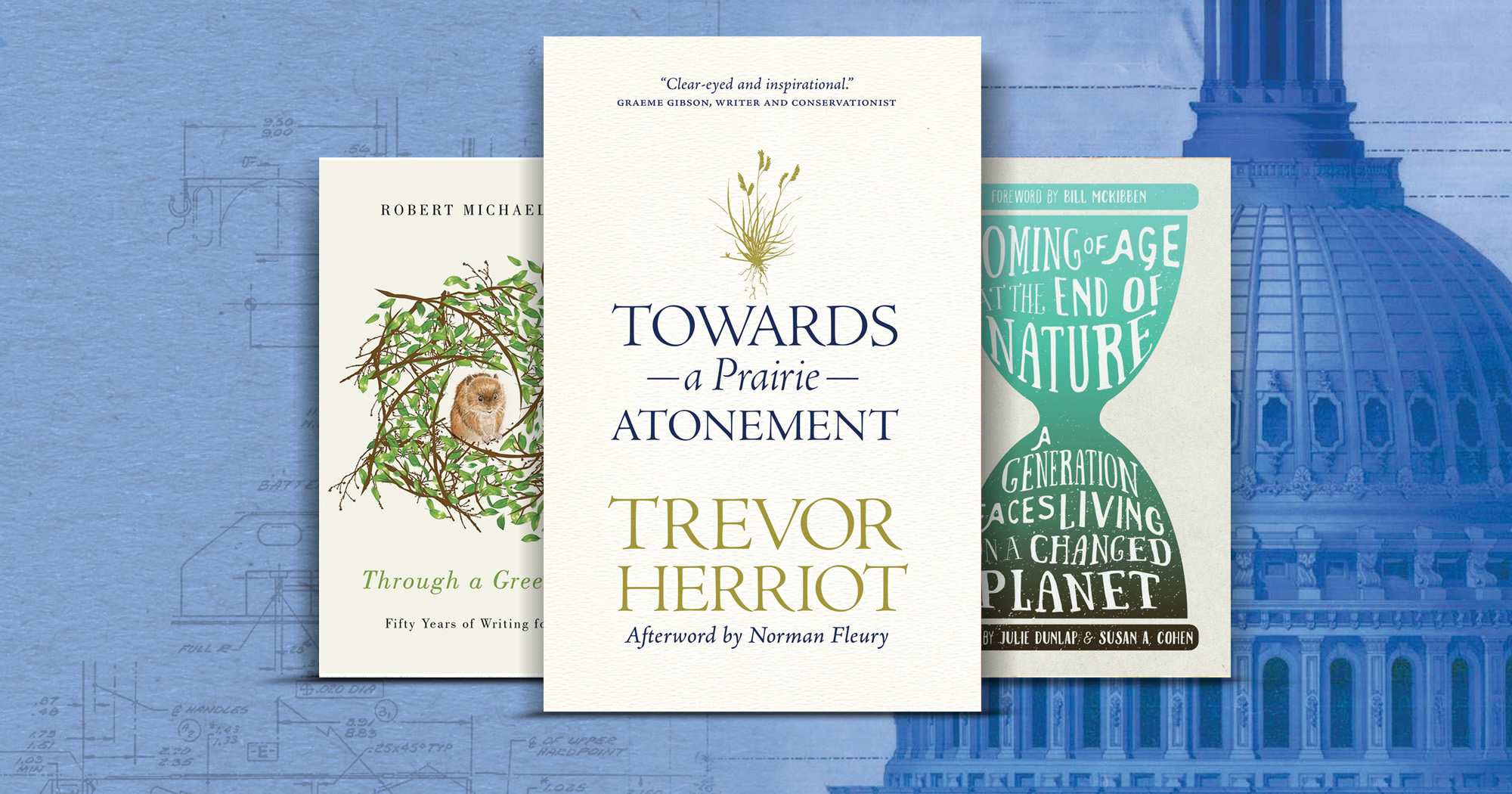
University presses are the intellectual vanguard of publishing. Their aims can never be solely commercial or corporate. They operate under different parameters than other publishing houses as both stewards of intellectual and artistic legacies and champions of new scholarship. Although part of prestigious institutions themselves, university presses give life to new ideas and voices that constantly challenge the status quo. In this way, they’re at the cutting edge of culture and institutional knowledge. Ten new releases this winter exemplify how far and wide university presses are searching for work of merit and substance.
Dangerous Years
Climate Change, the Long Emergency, and the Way Forward
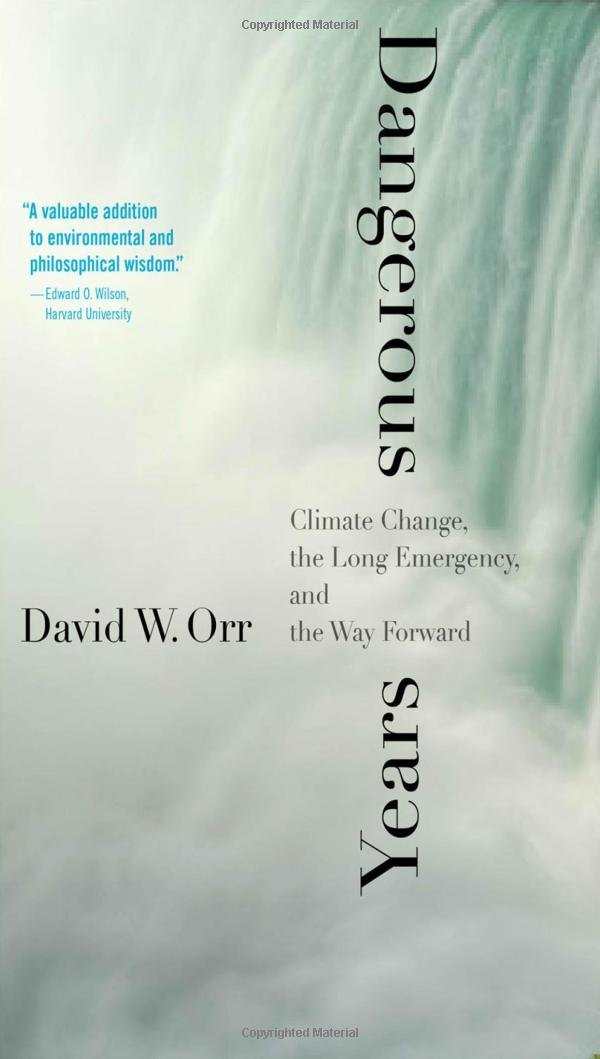
David W. Orr
Yale University Press
Hardcover $28.50 (320pp)
978-0-300-22281-4
Buy: Amazon
Environmental policy wonk and sustainability pioneer David W. Orr pulls the proverbial fire alarm on American complacence and apathy in his rousing new polemic, Dangerous Years.
Front and center is the physical reality of climate change and America’s inability to deal with it effectively. Even if emissions were curtailed dramatically in the near future, increased amounts of carbon dioxide will remain in the atmosphere for thousands of years and affect global climate systems in unpredictable ways, Orr explains. In other words, the time to act was years ago, though act we still should.
Pulling from some of the best minds in science, economics, political thought, and philosophy, Orr delivers a deep and thorough critique of the psychological and cultural underpinnings of modern industrialism that ultimately facilitated the climate crisis. Insular, selfish, undemocratic corporate cultures come under heavy fire, as do some top-down models of governance impervious to needs of specific bioregions. Without structural political changes that connect economics and ecology at the local, national, and global levels, human civilization will outstrip available resources, heat the planet to dangerous highs, and destroy itself.
The book is much more than a cautionary indictment, however. Dangerous Years posits real, proactive solutions involving the best aspects of business and government—a holistic approach to public policy that accounts for complex, interrelated ecological systems. Orr is like a twenty-first-century James Madison, reframing basic political precepts to better serve democracy and the long-term prospects of humanity.
SCOTT NEUFFER (November 11, 2016)
Levi Strauss
The Man Who Gave Blue Jeans to the World
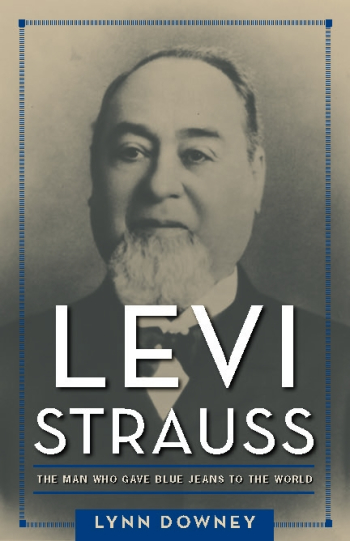
Lynn Downey
University of Massachusetts Press
Hardcover $34.95 (288pp)
978-1-62534-229-4
Buy: Amazon
Denim pants have never been so interesting as in Lynn Downey’s new biography of the very man who birthed blue jeans. Levi Strauss is a fresh, in-depth, groundbreaking look at an American icon.
The first official historian for Levi Strauss & Co., Downey has had access to company records other biographers could only dream of, though many of those records were destroyed by earthquake and fire in the early days of San Francisco. Still, her comprehensive research has produced a full, true-to-life account of Levi Strauss that sometimes contradicts the company’s own mythology surrounding its founder.
From the first chapter on, the prose is accessible, leanly descriptive, and flows at a nice narrative clip. Downey writes as if narrating a novel and provides historical detail from the point of view of Strauss himself. But as much as Downey relishes the minutiae of time and place, her real genius lies in the larger macro histories she weaves together in a complex tapestry. For example, she explores Jewish Bavaria extensively, especially the discriminatory laws that caused Jews to emigrate to America in the nineteenth century. The California Gold Rush also plays a crucial role in the biography.
Even if Strauss’s transition from distributing dry goods to manufacturing blue jeans was in fact not as capricious or entertaining as previously thought, Levi Strauss reveals the inspiring story of a man who ultimately transformed modern fashion. It is a quintessential immigrant story with fascinating insights into American history.
SCOTT NEUFFER (November 11, 2016)
Atomic Geography
A Personal History of the Hanford Nuclear Reservation
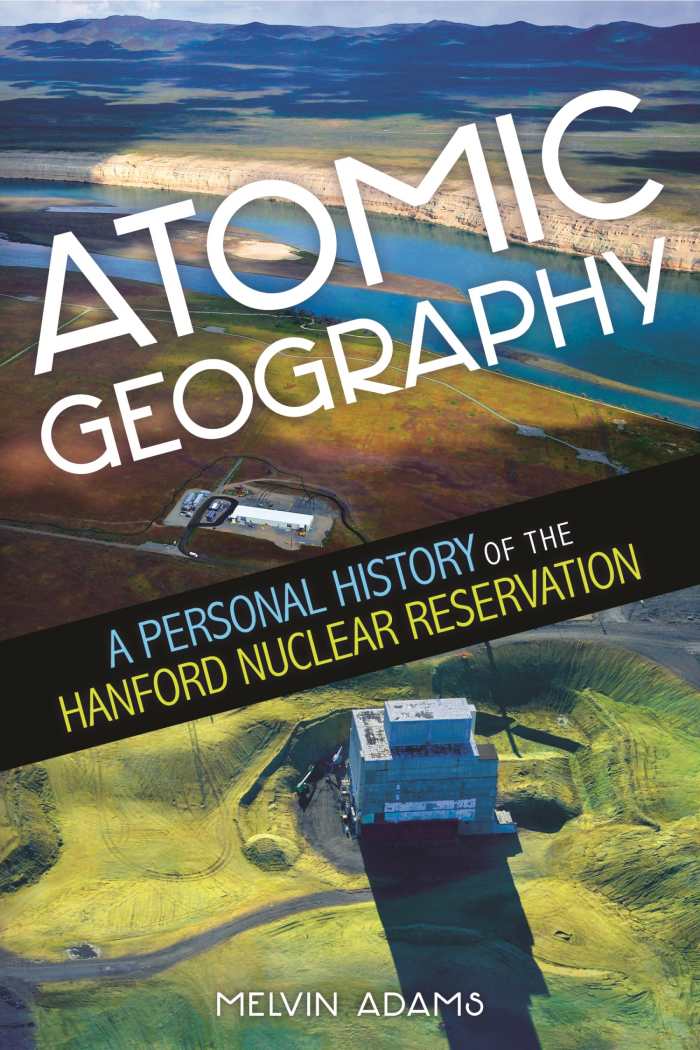
Melvin R. Adams
Washington State University Press
Softcover $22.95 (144pp)
978-0-87422-341-5
Buy: Local Bookstore (Bookshop), Amazon
For a book about nuclear waste cleanup, paradox and irony figure prominently—Atomic Geography is an intelligent, probing, and strangely poetic read.
Environmental engineer Melvin Adams spent more than two decades working at the Hanford nuclear site in eastern Washington. His keen personal history reveals how a rural stretch of arid steppe along the Columbia River was converted into America’s preeminent plutonium factory during World War II and the Cold War. That weapons of mass destruction sprung from an idyllic setting of sagebrush and bunchgrass is one of the book’s overarching ironies.
Adams explores technical issues of environmental mitigation with clear, personable prose reminiscent of nonfiction greats like John McPhee. The scale of both contamination and cleanup at the Hanford site are mind-boggling, but the book does a good job of putting scientific information within a human context.
The paradox that emerges is a rather amazing one: life flourishes even in a toxic environment. Adams waxes poetic about the resilient species of plants and animals that thrive in and around the site. Hanford has since become a national monument and part of a historic park dedicated to the Manhattan Project. In this transformation, the author sees redemption of the human race. Atomic Geography doesn’t merely map a specific place in time; it charts a greater course away from nuclear armament and toward environmental stewardship.
SCOTT NEUFFER (November 11, 2016)
Coming of Age at the End of Nature
A Generation Faces Living on a Changed Planet
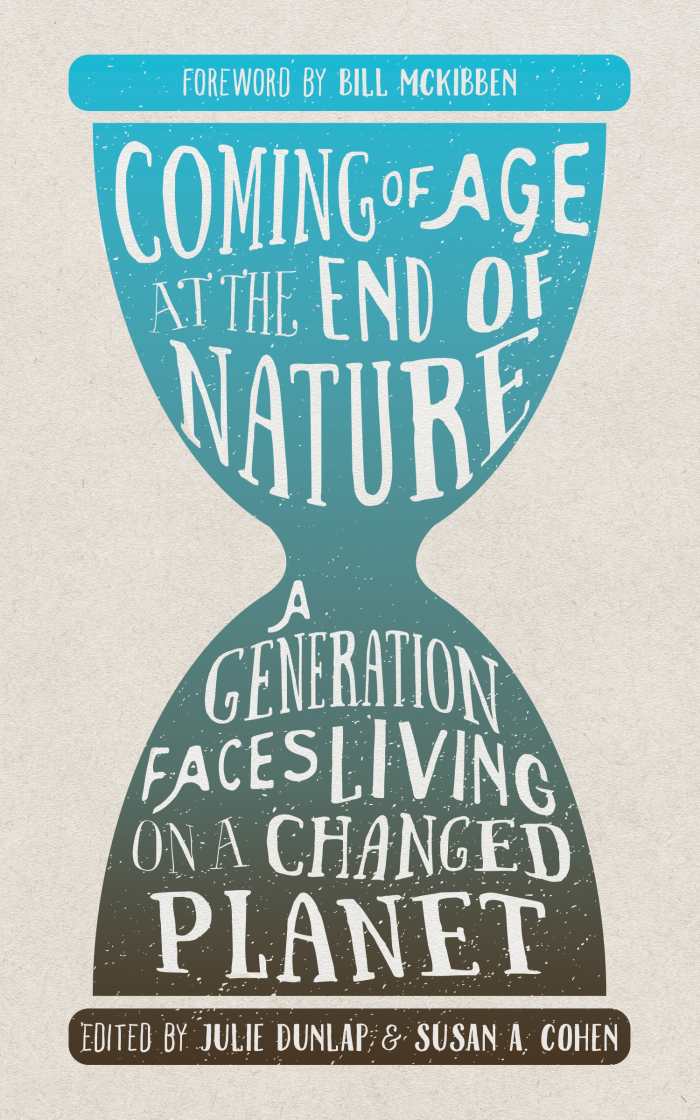
Julie Dunlap, editor
Susan A. Cohen, editor
Trinity University Press
Softcover $18.95 (248pp)
978-1-59534-780-0
Buy: Local Bookstore (Bookshop), Amazon
Coming of Age at the End of Nature ushers in a new wave of millennial thought on the environment, climate change, and the art of living.
This groundbreaking collection of essays, with a foreword by Bill McKibben, features twenty-two young writers in three different topical sections. Impressive in scope, the essays vary from the pleasantly anecdotal to the penetratingly philosophical. All focus on the relationship between humanity and nature, the inheritance of an industrialized, destabilized global ecosystem, and how millennials, more than any other generation, will be tasked with healing the planet.
An overwhelming sense of responsibility permeates these pages. It manifests itself in fiery polemics, such as in Bonnie Frye Hemphill’s “We Are the Fossil-Fuel Freedom Fighters.” The unholy alliance of big oil and big politics is targeted more than once. But these essays reach deeper than political activism. They examine underlying values and popular conceptions of consumerism, environmentalism, wilderness, and nature. In Lauren McCrady’s wonderfully subversive “My Present is Not Your Tombstone,” the elitist, sanctimonious strain present in so much environmentalist writing is identified and taken to task. Public lands are for everyone, McCrady argues, even cheesy tourists.
Coming of Age at the End of Nature distills the zeitgeist of the twenty-first century. Here are the age’s youthful voices in the full bloom of their protest. But even more than protest, these essays offer new ways of identifying oneself with nature in a postindustrial world.
SCOTT NEUFFER (November 11, 2016)
Nobody Rich or Famous
A Family Memoir
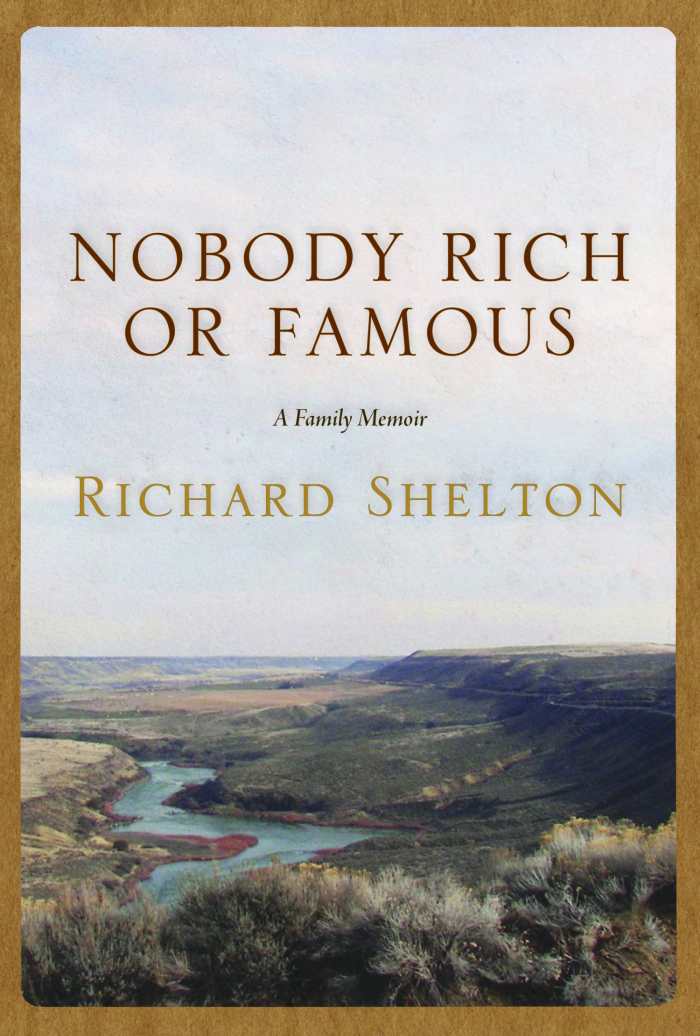
Richard Shelton
University of Arizona Press
Softcover $19.95 (296pp)
978-0-8165-3399-2
Buy: Local Bookstore (Bookshop), Amazon
In his new memoir, Nobody Rich or Famous, poet Richard Shelton doesn’t so much tug on the heartstrings as play an entire set upon them.
Rightly subtitled “a family memoir,” the book mixes social history with lyrical vignettes. Shelton becomes researcher and biographer of his own family, the roots of which run deep in Boise, Idaho. He digs into the journals of his grandparents and parents and their struggles coming westward. Like an investigative journalist, he tracks down remnants of their former lives and slowly creates a memorable portrait of an imperfect but distinctly Western family.
The prose is stellar. The sentences flow clearly and then swell with just the right amount of figurative language. Characters like Shelton’s own mother, Hazel, come to fully fleshed life in expertly crafted episodes, including, among other things, a shoot-out in a bar and a terrifying encounter with a mountain lion. Shelton writes of his family members with compassion and tenderness but doesn’t shy away from their flaws. Their shortcomings and struggles give the book its human face.
Perhaps nothing in Nobody Rich or Famous reads as beautifully as Shelton’s evocations of the natural world. From a boy’s perspective, the landscape changes mysteriously from the forested mountains of the Northwest to the vast deserts of Nevada and California. By delineating a personal history in relation to this high and dry environment, Nobody Rich or Famous recalls the best novels and nonfiction of Wallace Stegner. It’s an impressive entry in the literary canon of the American West.
SCOTT NEUFFER (November 11, 2016)
Blueprint for America
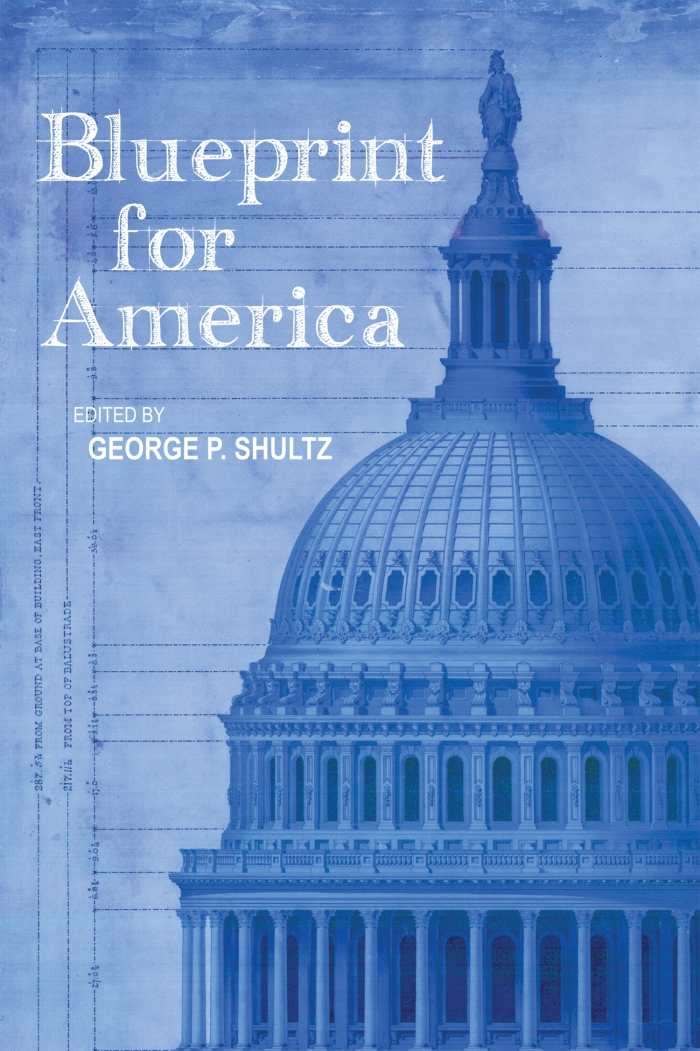
George P. Shultz
Hoover Institution Press
Softcover $19.95 (224pp)
978-0-8179-1995-5
Buy: Local Bookstore (Bookshop), Amazon
Edited by former US secretary of state George Shultz, Blueprint for America showcases center-right policy ideas from economists like John Cochrane and Michael Boskin, and foreign-policy bigwigs like Gen. James Mattis and Kori Schake. Besides national security and energy issues, federal debt and entitlement reform are discussed at length, as well as monetary policy, financial reform, health care, immigration, trade, and education.
Some selections regurgitate center-right positions too easily without enough critical specificity. Boskin’s “The Domestic Landscape,” for instance, breezes through comfortable, market-friendly clichés like “incentives for innovation” and cutting “red tape.” It’s also hard to take seriously any interventionist foreign-policy discussion in later essays without an adequate accounting of the human costs of the Iraq War and the greater destabilization which that war caused.
In contrast, the best essays offer more nonpartisan perspectives and proactive solutions. Cochrane makes some important points about the dangers of short-term debt, in his essay on financial reform. He also blasts right-wing xenophobia and, while not quite calling for open borders, makes a strong case that free trade and immigration benefit the United States and developing countries alike. Also noteworthy is Admiral James Ellis Jr.’s proposed carbon tax, which, he argues, would incorporate the environmental costs of pollution and climate change into the economic costs of doing business.
Reactions to Blueprint for America will likely vary, but the essays offer enough substantive policy discussion to stimulate the intellect and, at the very least, open dialogue between opposing parties.
SCOTT NEUFFER (November 11, 2016)
Badge 387
The Story of Jim Simone: America’s Most Decorated Cop

Robert Sberna
Kent State University Press
Softcover $19.95 (256pp)
978-1-60635-288-5
Buy: Amazon
This gripping and timely portrait of a highly decorated police officer sheds light on the challenges of inner-city policing.
In Badge 387, Cleveland-based journalist Robert Sberna weaves skillful biography with gritty true-crime episodes to portray the life and heroism of long-time Cleveland patrolman Jim Simone, nicknamed “Supercop” by local media for his crime-fighting feats.
Sberna knows how to set the stage for dramatic showdowns. Some chapters read like sensational page-turners as the action builds and climaxes. But the book ultimately transcends its procedural trappings. To find the foundations of Simone’s character and humanity, Sberna devotes an enormous amount of ink to Simone’s stint in Vietnam as a young platoon sergeant. In the madness of war, where lines between good and evil are often blurred, Simone finds singular purpose in pursuing the good, though he’s never able to leave behind the scars and trauma of war.
Most importantly, the book plumbs the dynamics of inner-city policing and the relationship between cops and minority communities plagued by crime. Though sympathetic to the police officer’s perspective in fatal shootings, the book raises important points about judgment and restraint in the line of duty. Badge 387 proffers an example of an officer who holds himself to the highest standards of conduct, transparency, and accountability. Not only does Simone regularly interact with the community he serves, Sberna demonstrates, but he strives to police everyone the same, including city officials and officers in his own department who break the law. In a time of national discussion and debate about such issues, Badge 387 increases our understanding of law enforcement.
SCOTT NEUFFER (November 11, 2016)
Religion and Sustainable Agriculture
World Spiritual Traditions and Food Ethics
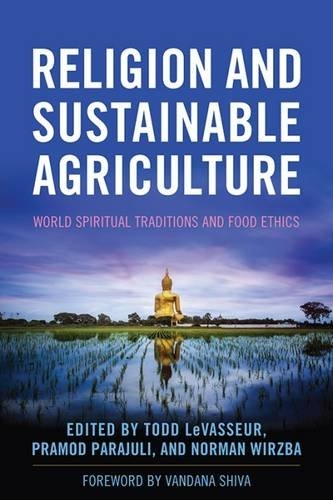
Todd LeVasseur, editor
Pramod Parajuli, editor
Norman Wirzba, editor
University Press of Kentucky
Hardcover $50.00 (394pp)
978-0-8131-6797-8
Buy: Local Bookstore (Bookshop), Amazon
This commodious study of the relationship between spirituality and agriculture calls into question prevailing practices of modern industrialism.
Religion and Sustainable Agriculture includes fifteen selections from leading scholars in the areas of religion, anthropology, environmental science, and sustainability, among other fields. The ethical tenets of Christianity, Islam, Judaism, Hinduism, Buddhism, and a number of indigenous spiritual traditions come into sharp focus, specifically in the ways belief systems inform husbandry and respective land ethics.
The book’s broad, multidisciplinary approach delves into the religious and moral beliefs underlying food production in locales as various as the Amazon and the Himalayas. Critical explorations of concepts and practices like “permaculture” and “biochar” put the book at the forefront of ecological thought, connecting modern back-to-earth political movements with age-old cultural precedents.
The book is thinner in assessing urban ecosystems and the reality of modern cities. Furthermore, the authors all have a tendency to glorify local rusticisms at the expense of complex macroeconomics. For instance, Frederique Apffel-Marglin discusses the struggle for indigenous rights—and by extension, food sovereignty—in the Peruvian jungle in the 1970s and ‘80s but doesn’t address the hard leftist economic policies that crippled Peru’s economy in the same time period.
Even if one-sided politically, Religion and Sustainable Agriculture still succeeds as an enlightening treatise on ethical agriculture. As Pramod Parajuli eloquently argues in the book’s conclusion, blending spirituality back into food production will enable greater community and environmental health around the globe.
SCOTT NEUFFER (November 11, 2016)
Towards a Prairie Atonement
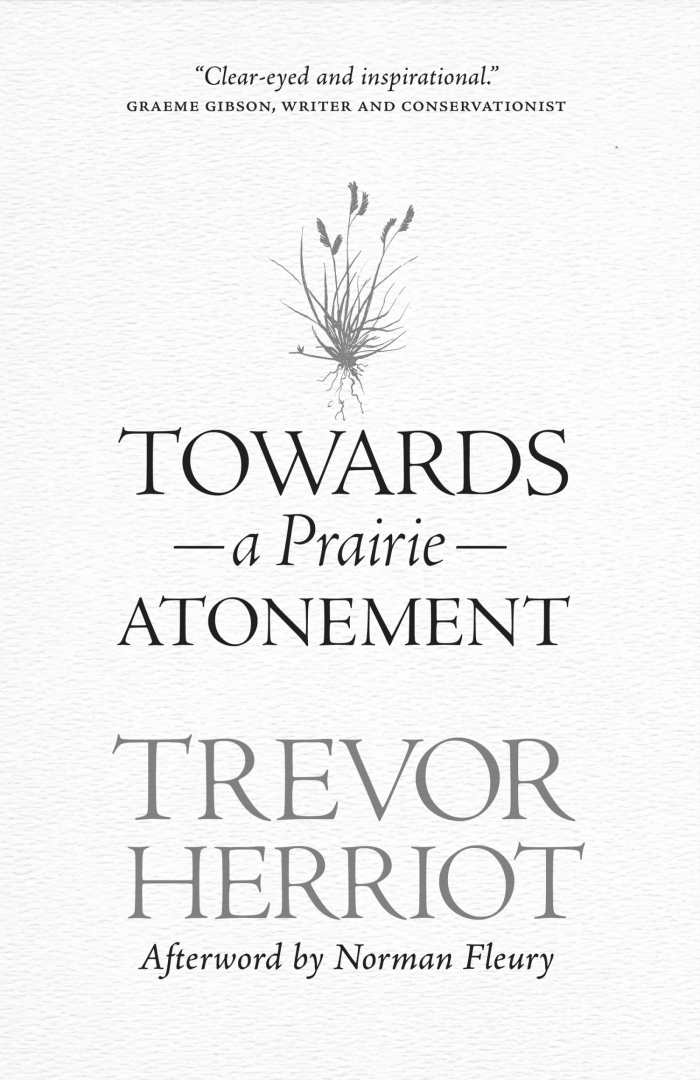
Trevor Herriot
University of Regina Press
Hardcover $17.95 (110pp)
978-0-88977-454-4
Buy: Local Bookstore (Bookshop), Amazon
Naturalist Trevor Herriot makes a passionate and beautiful plea for reconciliation in Towards a Prairie Atonement, a short but powerful meditation on the future of Saskatchewan’s native prairie lands.
The book alternates between lyrical, almost elegiac first-person accounts of the Canadian plains and incisive social history of colonial white settlement and displacement and oppression of indigenous peoples. Much of the book follows Herriot’s trip to a communal grassland preserve—like an island surrounded by a sea of monoculture cropland—with a Metis elder named Norman Fleury. Their open, honest, and affectionate relationship offers a touching model of how historical injustices can be addressed between white people and members of indigenous communities.
Herriot’s writing sweeps across the page with the same breadth of the prairie he loves, capturing native species, birdsong, and the way grasslands swell and dip into forested ravines. These beautiful descriptions, however, culminate in moments of profound sadness. “But an uneasiness invades my thoughts,” Herriot writes. “There is no peace here because there is no justice.”
Essential to the book’s concept of atonement is personal and societal recognition of wrongdoing, pain, and loss. In the author’s own words, such awareness must also be coupled with gratitude for what’s left to build upon. By book’s end, Towards a Prairie Atonement becomes an important call to action for increased prairie conservation and more communal land use.
SCOTT NEUFFER (November 11, 2016)
Through a Green Lens
Fifty Years of Writing for Nature
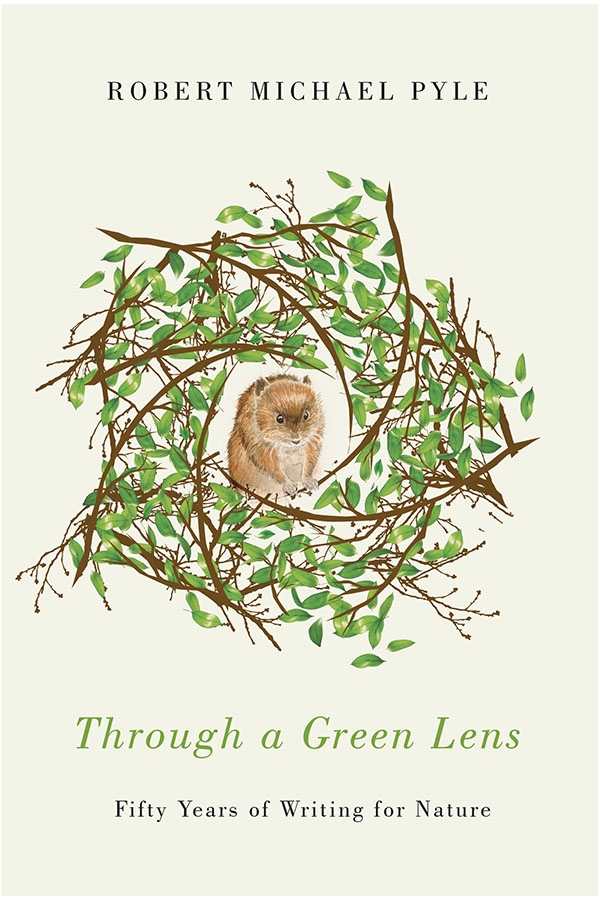
Robert Michael Pyle
Oregon State University Press
Softcover $22.95 (304pp)
978-0-87071-881-6
Buy: Local Bookstore (Bookshop), Amazon
Renowned naturalist and lepidopterist Robert Michael Pyle showcases five decades of personal essays that together untangle and illumine the mysteries of nature and being.
Through a Green Lens offers hauntingly beautiful macro and micro views of the natural world. Pyle is a writer of undeniable talent and style. He can turn from the panegyric to the polemic in a single sentence. From essay to essay, his scope is even wider. Many selections focus on his personal love of landscape, watercourses, flora and fauna, especially butterflies, all of which he describes with Whitmanesque ebullience. On the other hand, he writes of political and technical issues, such as European land use, with layered knowledge and insight.
As much as these essays pick at the body politic and address issues of governance and conservation, the best selections dig beneath the veneer of politics and touch the quick of life. “No Soil Required,” for example, finds miraculous resurrection in a compost heap. “In Praise of the Tangled Bank” celebrates nature’s diversity and upends the human need to homogenize.
Perhaps the book’s most novel and refreshing perspective is not its exaltation of wilderness and pristine lands, but rather its portrayal of the author’s love and care of abused and degraded lands, those suburban and urban landscapes in need of human understanding and compassion. In this and myriad other ways, Through a Green Lens is an unusually intelligent and beautiful read that captures the ever-evolving substance of nature as much as a creative mind in splendid bloom.
SCOTT NEUFFER (November 11, 2016)
Scott Neuffer
